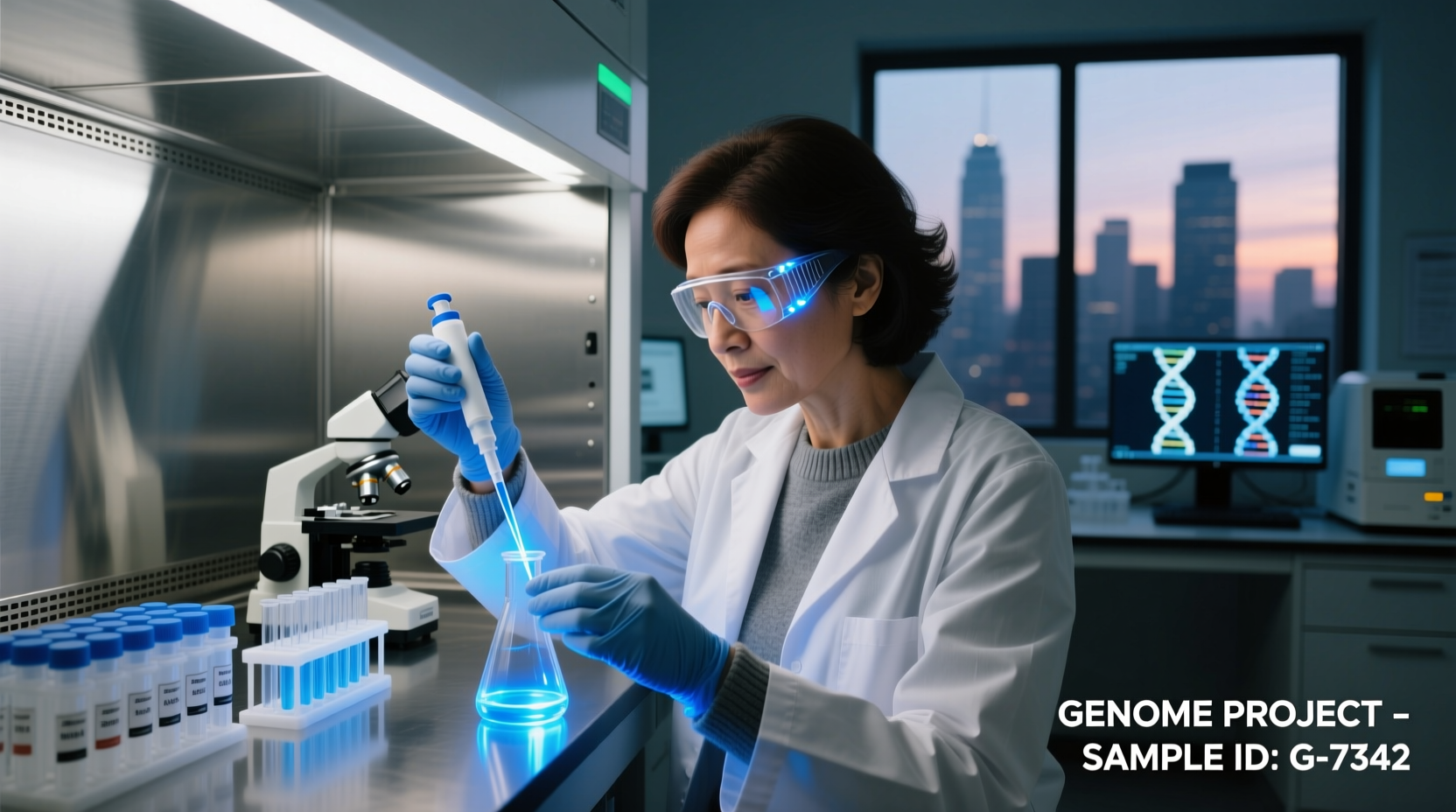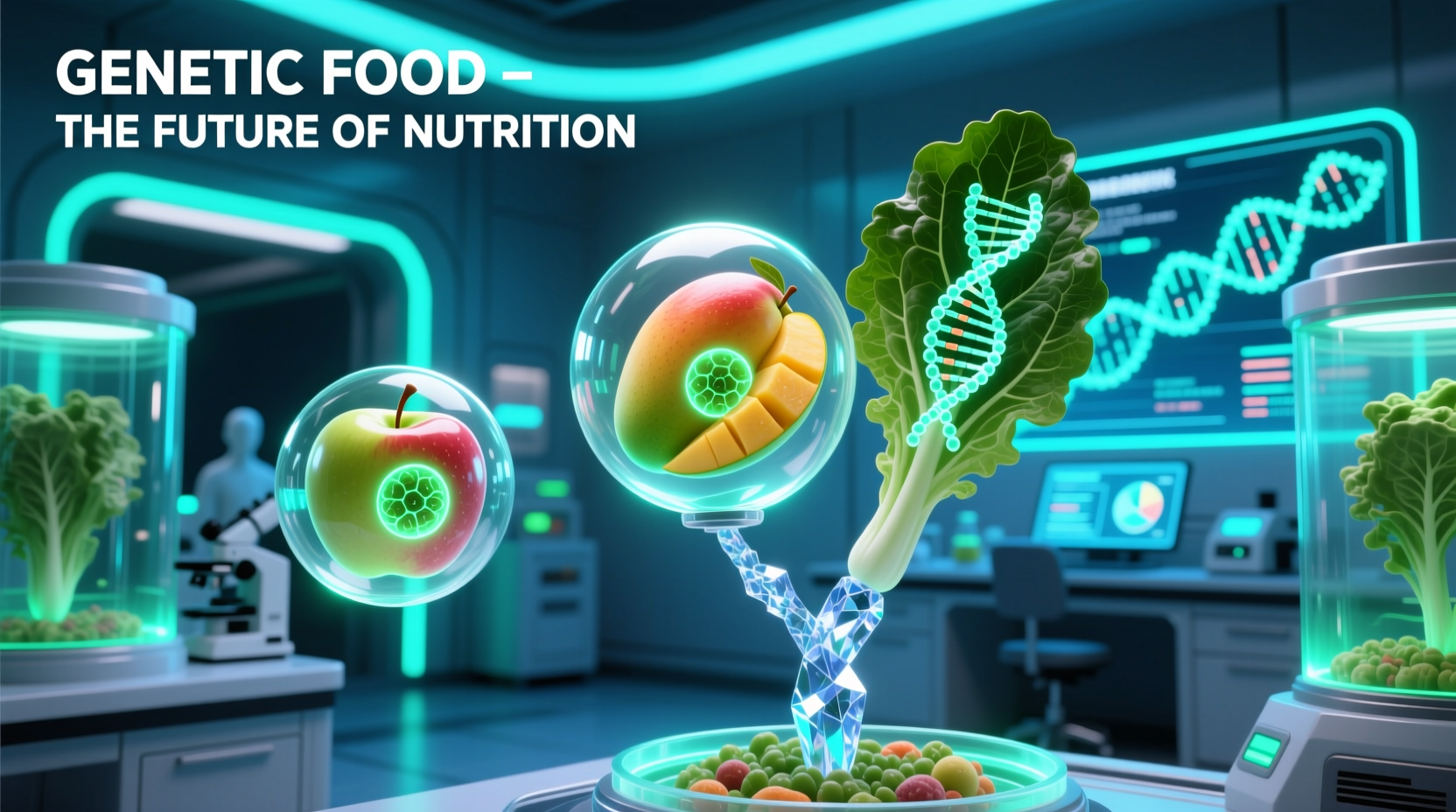"Genetic food" isn't a scientifically recognized term—all foods contain genetics. What you're likely searching for is genetically modified food (GMOs), which refers to crops altered through genetic engineering to enhance specific traits like pest resistance or nutritional value. This article clarifies the terminology confusion and provides evidence-based facts about GMO technology, its applications, safety assessments, and global regulatory standards.
Why "Genetic Food" Is a Misunderstood Term
When people search for "what is genetic food," they're typically confused about terminology. All living organisms—including every food item—contain genetic material (DNA). The accurate term for what most searchers mean is genetically modified food or GMOs (genetically modified organisms).
Genetic modification in agriculture specifically refers to the laboratory process of altering an organism's DNA by adding, removing, or modifying specific genes. This differs from traditional breeding methods that have been used for thousands of years. Modern genetic engineering allows for more precise changes and can introduce traits from unrelated species—a process that cannot occur naturally through conventional breeding.
The Science Behind Genetic Modification Explained
Genetic engineering in food production involves several sophisticated techniques:
- Gene identification: Scientists identify specific genes responsible for desirable traits
- Gene insertion: Using bacterial vectors or gene guns to introduce new DNA sequences
- Selection and testing: Growing modified plants and verifying trait expression
- Rigorous safety assessment: Years of testing before commercial approval

Unlike traditional cross-breeding which mixes thousands of genes, genetic engineering targets specific traits with precision. For example, Bt corn contains a single gene from Bacillus thuringiensis bacteria that produces a protein toxic to certain insect pests but harmless to humans and animals.
Evolution of Genetically Modified Crops: A Timeline
Understanding the development of GMO technology provides context for current applications:
- 1973: First successful recombinant DNA experiment by Herbert Boyer and Stanley Cohen
- 1983: First genetically modified plant (tobacco) created
- 1994: Calgene's Flavr Savr tomato becomes first commercially grown GM food crop approved for sale
- 1996: Widespread commercial planting begins with soybeans, corn, and cotton
- 2010s: Second-generation GMOs with consumer benefits like Golden Rice (vitamin A enriched)
- 2020s: Precision gene editing techniques like CRISPR enabling more targeted modifications
Common Genetically Modified Crops and Their Traits
| Crop | Percentage of US Crop (2023) | Primary Modification | Key Benefit |
|---|---|---|---|
| Soybeans | 94% | Herbicide tolerance | Reduced tillage, soil conservation |
| Corn | 92% | Insect resistance & herbicide tolerance | Reduced pesticide use, higher yields |
| Cotton | 94% | Insect resistance | Reduced insecticide applications |
| Canola | 95% | Herbicide tolerance | Improved oil profile |
| Papaya | 80% (Hawaii) | Virus resistance | Saved Hawaiian papaya industry |
Data source: USDA Economic Research Service
Safety Assessment and Scientific Consensus
Genetically modified foods undergo more testing than any previous food technology. Regulatory agencies worldwide—including the FDA, USDA, and EPA in the United States—require extensive safety evaluations before approval.
The scientific consensus on GMO safety is clear. According to the National Academies of Sciences, Engineering, and Medicine, after reviewing over 900 studies:
"Genetically engineered crops are just as safe to eat as their non-GE counterparts and have no adverse effects on the environment compared to conventional crops."
Major global health organizations support this conclusion, including:
- World Health Organization (WHO)
- Food and Agriculture Organization (FAO)
- American Medical Association
- European Commission (after reviewing 130 research projects)
Benefits and Considerations of Genetic Modification
Genetic engineering offers several agricultural and nutritional benefits while also raising important considerations:
Agricultural Benefits
- Reduced pesticide use (Bt crops have decreased insecticide applications by 37% according to Nature journal)
- Improved crop yields, particularly in developing regions
- Enhanced resistance to diseases and environmental stresses
- Reduced soil erosion through no-till farming practices enabled by herbicide-tolerant crops
Nutritional Enhancements
- Golden Rice with beta-carotene to combat vitamin A deficiency
- High-oleic soybeans with healthier fat profiles
- Biofortified crops with increased iron, zinc, or other nutrients
Important Considerations
- Intellectual property rights and seed saving practices
- Potential for herbicide-resistant weeds (requires integrated pest management)
- Labeling transparency and consumer choice
- Ethical considerations around corporate control of seed supply
Global Regulatory Approaches to GMOs
Regulatory frameworks for genetically modified foods vary significantly around the world:
- United States: Product-based regulation focusing on the final food product rather than the process
- European Union: Process-based regulation requiring pre-market authorization and mandatory labeling
- Canada: Similar to US approach with mandatory labeling only when safety or nutritional properties change
- Japan: Requires safety assessment and labeling for certain GM foods
- Africa: Mixed approaches with some countries embracing GMOs (South Africa, Kenya) while others restrict them
The Codex Alimentarius, established by the FAO and WHO, provides international guidelines for GMO safety assessment that many countries reference in developing their regulatory frameworks.
Consumer Labeling and Identification
Understanding food labels helps consumers make informed choices:
- National Bioengineered Food Disclosure Standard: US regulation requiring labeling of foods containing detectable modified genetic material
- Non-GMO Project Verified: Third-party verification for products made without GMOs
- USDA Organic: Prohibits the use of genetic engineering
- "GMO-Free" claims: Not regulated—look for third-party verification for reliability
It's important to note that the presence of a GMO label doesn't indicate a safety concern—regulatory agencies worldwide agree that approved GMOs are as safe as their conventional counterparts.
Emerging Technologies: Beyond Traditional GMOs
New genetic techniques are expanding the possibilities for crop improvement:
- CRISPR-Cas9: Allows for precise gene editing without introducing foreign DNA
- Gene silencing: Temporarily turns off specific genes (used in non-browning Arctic Apples)
- Synthetic biology: Creating entirely new biological pathways
These newer techniques challenge traditional regulatory definitions of GMOs since they can create changes indistinguishable from natural mutations. Many countries are currently updating their regulatory frameworks to address these innovations.
Addressing Common Misconceptions
Several persistent myths about GMOs deserve clarification with evidence:
- "GMOs cause new allergies": All GM foods undergo allergenicity testing; no documented cases of new allergies from approved GMOs
- "GMOs reduce biodiversity": Studies show GM crops can support biodiversity through reduced pesticide use
- "GMOs increase chemical use": While herbicide use increased with herbicide-tolerant crops, insecticide use decreased significantly with Bt crops
- "GMOs are unnatural": All agriculture involves modifying plants—GMOs simply use more precise techniques
Scientific understanding continues to evolve through ongoing research, which is why regulatory agencies require continuous monitoring of approved GMOs.
Looking Forward: The Future of Food Modification
Genetic technologies will likely play an increasingly important role in addressing global food challenges:
- Climate-resilient crops that withstand drought and extreme temperatures
- Nutritionally enhanced foods targeting specific health needs
- Crops requiring fewer resources (water, fertilizer) to grow
- Reduced food waste through improved shelf life and storage characteristics
As these technologies develop, maintaining transparent communication, rigorous safety assessments, and consumer choice will remain essential components of responsible innovation in our food system.











 浙公网安备
33010002000092号
浙公网安备
33010002000092号 浙B2-20120091-4
浙B2-20120091-4